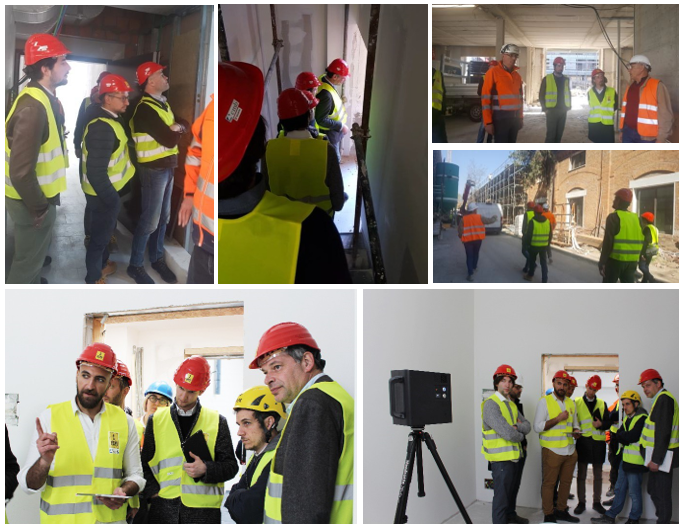The first Italian living lab event was held on the April 1st, 2019 at the BIM4REN Pilot site, a XIX century building that project partner CMB Carpi has been renovating and extending to host a new dormitory for university students at Complesso Santa Marta in Venice’s Laguna.
A workshop, organized at the site by the Italian consortium partners (ATI, CMB Carpi, GBC Italia and R2M Solution), involved several local stakeholders among which you could find designers, consultants and suppliers who represent the potential early adopters of BIM4REN tools.

During this 1st part the session, CMB Carpi presented the main facts of the construction site. The design process started by the publication of a tender by University of Venice and Ca’ Foscari, on the base of an existing project to appoint construction services and building management for 2 areas: an existing building to be fully retrofitted and a new building. Fabrica Immobiliare (an asset management company) won the tender and appointed Consorzio di Progettazione to improve the project for specific needs:
- a higher energy performance of the buildings
- the optimization of the construction technologies to face the difficult logistic of the area and the simplification of the construction process by adopting dry construction systems (steel frame and prefabricated timber technology)
- reducing project costs and focusing on the living quality for upcoming building users.
They explained that the company had 600 days to complete the works, but it took seven months to remove all furniture and material from the existing building before being able to start said works. At this point, the construction process didn’t rely on digitalized tools and BIM was only used at the end of the works to represent the dwelling “as built” for some building systems. During the presentation it was highlighted that once the BIM model was available, it was easier to share documentation among the stakeholders involved in the renovation, as they could quickly upload and download project documents, drawings, contracts, etc. online.
For both building firms and professional offices, the purchase of BIM software licenses as well as training sessions are expensive and time consuming. These results confirm the market demand for open access, easy-to-use digital solutions as those under development in BIM4REN project.
The second part of the workshop, prepared by ATI and GBC Italia, was dedicated to a group discussion on the barriers encountered when using BIM processes in building renovations, in particular by SMEs. The stakeholders present quickly highlighted that at present the sector scarcely uses BIM tools for renovation purposes and that these tools are even less available among SMEs. The main reason behind this is the cost barriers for smaller organizations. For both building firms and professional offices, the purchase of BIM software licenses as well as training sessions are expensive and time consuming. These results confirm the market demand for open access, easy-to-use digital solutions as those under development in BIM4REN project.
It was also discussed that, as a tool, BIM is well developed for the concept and design phases of the building process, but it needs to be optimized for the construction and management phases in order to be suitable for the renovation processes. High flexibility of use and easy input of data and documents should be guaranteed together with the interoperability of other tools. Also a large dataset about materials and products should be integrated to populate the information on building models and the roles and responsibilities of the BIM user in the process should be clarified.
Another interesting point made was that nowadays, in public works, BIM is used to guarantee compliance with the current legislation for public tenders, however the added value goes often unrecognized and therefore not rewarded adequately.

Straightforward and low-cost tools are needed as well as a big effort in terms of dissemination, awareness raising and training for professionals involved in the renovation process.
This workshop and its Spanish counterpart helped to conclude that the potential of BIM use in renovations processes are not yet fully understood by all agents involved in the construction process. Straightforward and low-cost tools are needed as well as a big effort in terms of dissemination, awareness raising and training for professionals involved in the renovation process. These actions are the key to boost the innovation and transformation of the building sector that digitalisation can bring about.
This article is part of a series regarding the kick-off activities at our Living Labs. You can read the first article about the Spanish workshop and it’s conclusions here and about the French Pilot Tech set-up here.
